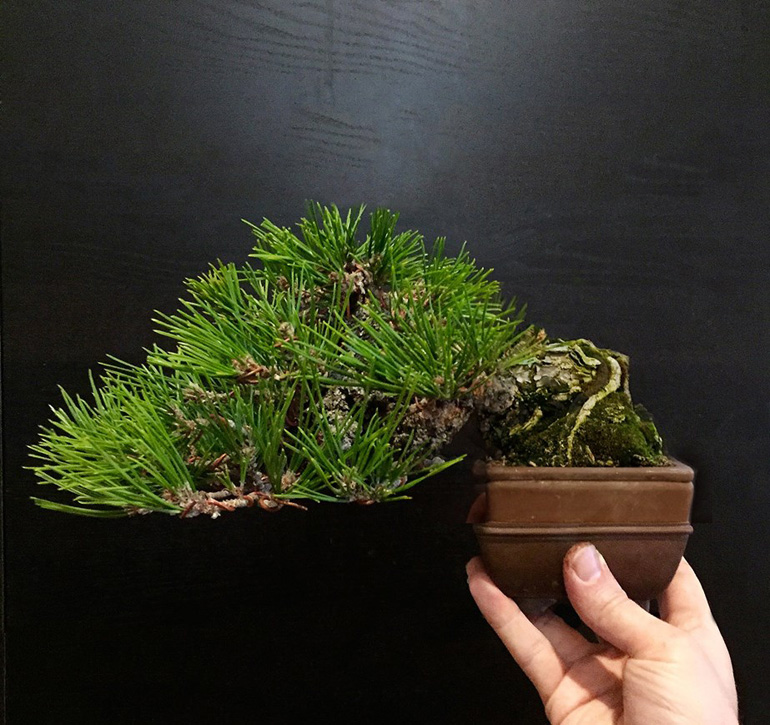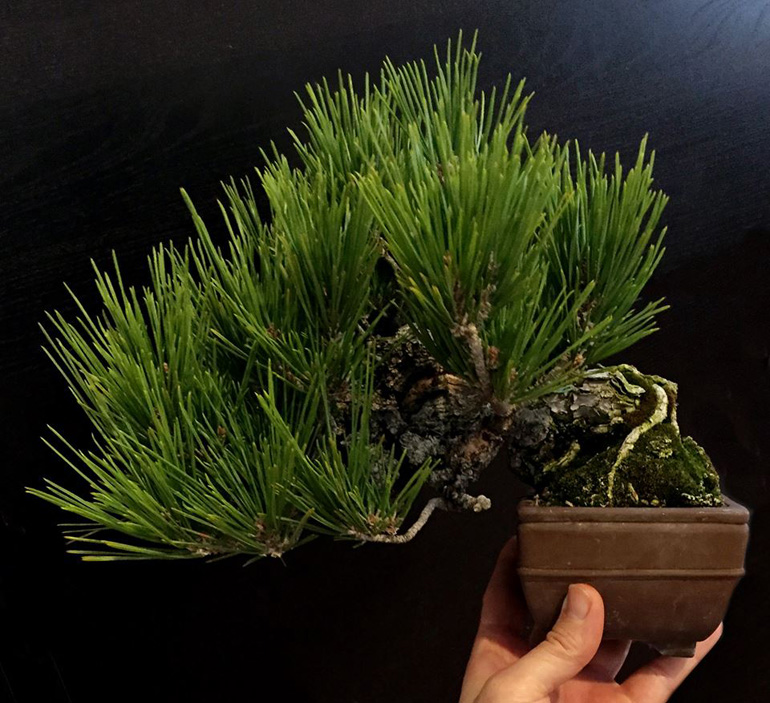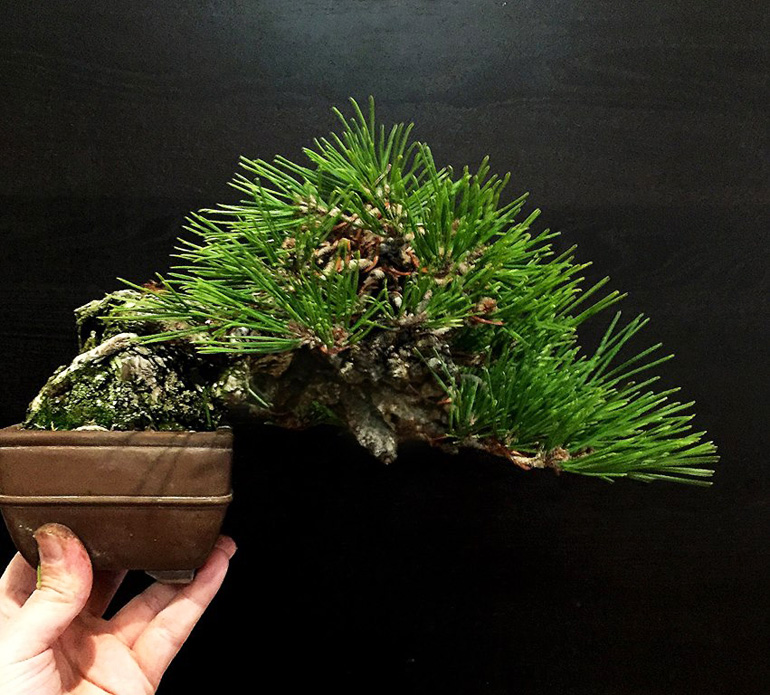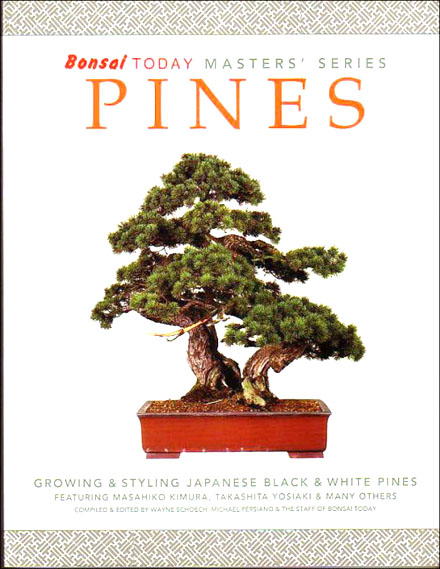
After styling. The tree is a Cork bark Japanese black pine. The hand belongs to the Ben Gliffin. If you compare this photo with the before photo just below, you can see some real progress with needle thinning and reduction. You might also notice how Ben has left the needles on the far left longer than the needles on top. This will encourage vigor in the direction of the longer needles.
The sweet little tree featured here is a Shohin Cork bark Japanese black pine that belongs to Ben Gliffin. If you know Japanese black pines you also know that it take a certain amount of skill and perseverance to keep them looking good. This has a lot to do with needle reduction, an ongoing challenge with many pines and especially with longer needle pines like the Japanese black.
I’m not sure how I missed Ben Gliffin in my digital and real time travels, but now, happily, we can add him to our list of accomplished bonsai artists. The three photos shown here are from Ben’s facebook feed.

Before. Needles gone wild. You might notice how the needles on the top are the most vigorous. This apical dominance is to be expected with most trees and it explains (at least in part) why Ben reduced these needles more than the lower less vigorous ones.

The other side. Here's Ben's caption: Lazy Sunday afternoon at home needle thinning and giving a little cork bark black pine its first styling in many years.
Want to learn more about pine needle reduction? Energy balancing too? This is a good time with our…

We are about to run out of
our famous Pine book
We’ll reprint but it will be months before it’s back